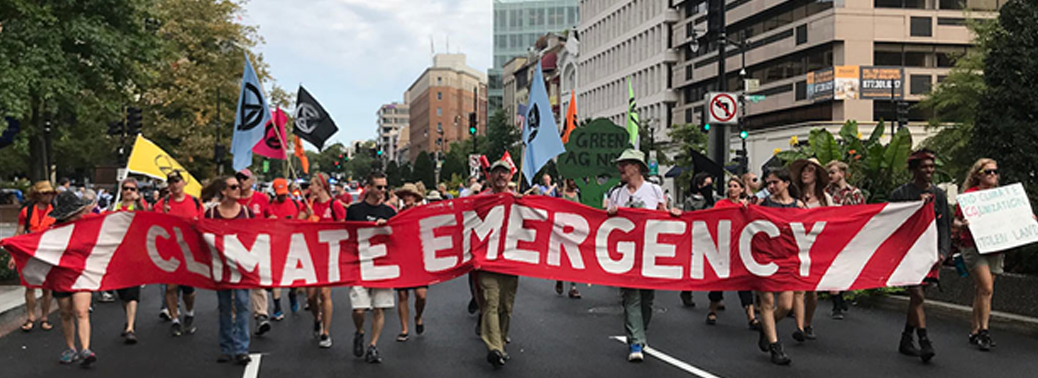NEW U.N. CLIMATE REPORT OFFERS ‘BLEAK’ EMISSIONS FORECAST
30, Nov 2019

Prelims level : Climate Change & its Impacts
Mains level : GS-III, Conservation, Environmental Pollution and degradation, Environmental Impact Assessment.
Why in News?
- The 10th Emissions Gap Report by the United Nations Environment Programme (UNEP) warned that there’s “no sign” greenhouse gases will hit their zenith anytime soon.
- India-is-the-fourth-largest-emitter-of-greenhouse-gases.
Emissions Gap:
- The Emissions Gap, also called Commitment Gap, measures the gap between what is need to be done and what is actually been done to tackle climate change.
- The gap is the difference between the low level of emissions that the world needs to drop to, compared with the projected level of emissions based on countries’ current commitments to decarbonization.
- Emissions-Gap-Report-by-UNEP-2019:
- The world’s emissions have been increasing by about 5% per year for the past decade. That would lead to temperature increases of nearly 4°C by 2100.
- Emissions levels reached 55 GtCO2 in 2018. By 2030, it will rise to double the volumes consistent with limiting temperature increases to 1.5°C.
- To stop temperatures from rising more than 1.5°C, the world needs to cut greenhouse gas emissions by 32 GtCO2e by 2030.
- Efforts to reduce CO2 emissions would have to increase five-fold to reach the 1.5 degrees C target.
- China’s per capita emissions are rising to levels experienced by developed economies. China is still the world’s largest single source of greenhouse gas emissions, with annual emissions now almost double of US, the second greatest source.
- The rankings would change if land-use change emissions were included, with Brazil likely to be the largest emitter.
Suggestions:
- The report names five key areas for closing emission gap:
- At least $1.59 billion annual investment in renewables and more efficient energy use
- Coal phaseout
- Decarbonization of transport
- Decarbonization of industry
- Increased access to electricity for 3.5 billion people
- Some environmental economists have called for a tax on CO2 emissions to incentivize companies to produce energy more sustainably. However, it was unsuccessful.
- One strategy for closing the emissions gap would see renewable sources make up 85% of the world’s electricity mix by 2050.
- The number of countries and cities setting goals to go carbon-neutral has risen since September 2018 from just a handful to about 65. The European Union, for example, aims to be carbon neutral by 2050. Individual countries including Germany, the UK and France have also set zero-emissions goals.
Suggestions for India:
- Plan the transition from coal-fired power plants
- Develop an economy-wide green industrialization strategy towards zero-emission technologiesExpand mass public transit systems
- Develop domestic electric vehicle targets working towards 100 per cent new sales of zero-emission cars
Emissions Gap Report:
- It is annually published by United Nations Environment Programme (UNEP). It examines the progress of countries to close the gap via their commitments to Emissions Reduction.
The Report Measures Three Key Trend Lines:
- The amount of greenhouse gas emissions every year up to 2030
- The commitments countries are making to reduce their emissions and the impact these commitments are likely to have on overall emission reduction
- The pace at which emissions must be reduced to reach an emission low that would limit temperature increase to 1.5 C, affordably
- The top four emitters (China, USA, EU and India) contribute to over 55% of the total emissions over the last decade.India’s global emissions was 5.5% in 2018.
- G20 nations collectively account for 78 % of all emissions. Emissions per capita of India is one of the lowest within the G20.







